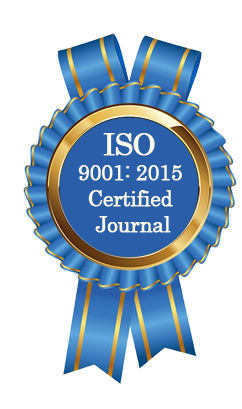| All | Since 2020 | |
| Citation | 105 | 60 |
| h-index | 4 | 4 |
| i10-index | 3 | 2 |
WJAHR Citation 
Login
News & Updation
Best Article Awards
World Journal of Advance Healthcare Research (WJAHR) is giving Best Article Award in every Issue for Best Article and Issue Certificate of Appreciation to the Authors to promote research activity of scholar.
Best Article of current issue
Download Article : Click here
Indexing
Abstract
IMMUNOHISTOCHEMICAL EVALUATION OF SOX10 EXPRESSION IN TRIPLE NEGATIVE BREAST CANCER IN SAMPLE OF IRAQI PATIENTS (CLINICOPATHOLOGICAL STUDY)
Dr. INAS Hasan Saad* and Dr. Ayser Hammed Latif
ABSTRACT
Background: Triple-negative breast cancer (TNBC) is an aggressive subtype characterized by the absence of estrogen receptor (ER), progesterone receptor (PR), and human epidermal growth factor receptor 2 (HER2) expression. Identifying reliable biomarkers for TNBC prognosis and progression remains a critical research focus. The SRY-related HMG-box 10 (SOX10) transcription factor has been implicated in various malignancies, including breast cancer, yet its role in TNBC in middle east remains understudied. Aim of the study: To evaluate SOX10 expression in TNBC cases using immunoreactivity score (IRS) and H-score methods and to assess its correlation with clinicopathological features, including tumor grade, tumor size, and nodal involvement. Materials and methods: A cross-sectional study was conducted on 50 TNBC cases at Al-Yarmouk Teaching Hospital and private laboratories in Baghdad from 1st of March 2024 to 1st of February 2025. Immunohistochemistry (IHC) was performed to assess SOX10 expression using both IRS and H-score systems. Statistical analysis was conducted using SPSS-27, with significance set at p ≤ 0.05. Results: SOX10 expression was detected in 74.4% of cases based on H-score and 59.57% using IRS. Higher SOX10 expression was significantly associated with tumor grade (p = 0.018), tumor size (p = 0.001), T-stage (p = 0.001), and N-stage (p= 0.002), supporting its role in tumor aggressiveness, this is a part from age-related differences which were not statistically significant (p = 0.380). Conclusion: SOX10 is highly expressed in TNBC and correlates with tumor aggressiveness, making it a potential prognostic biomarker. Standardization of SOX10 scoring methods is necessary for its clinical utility.
[Full Text Article] [Download Certificate]
